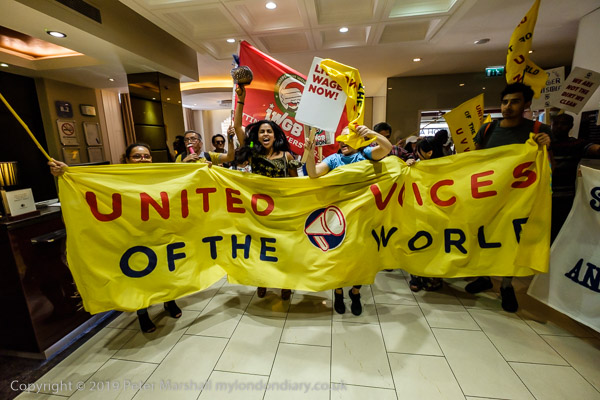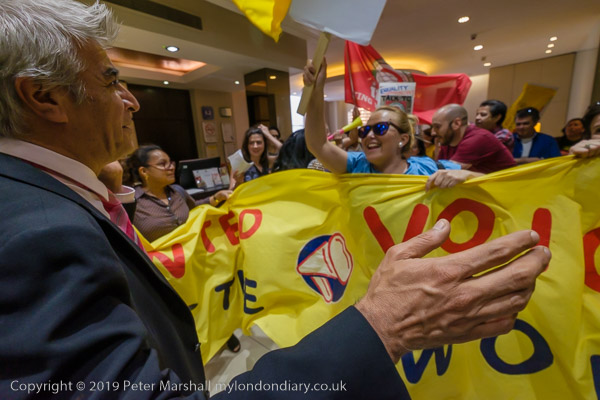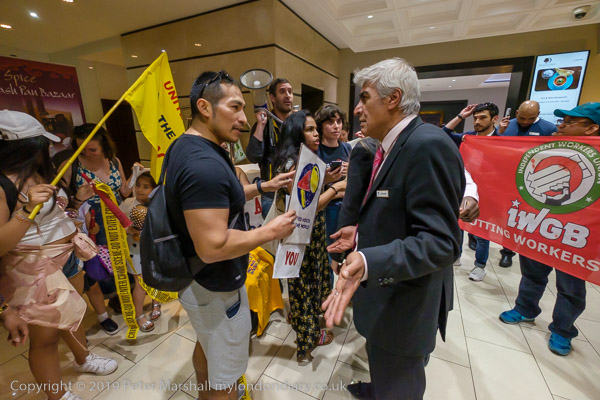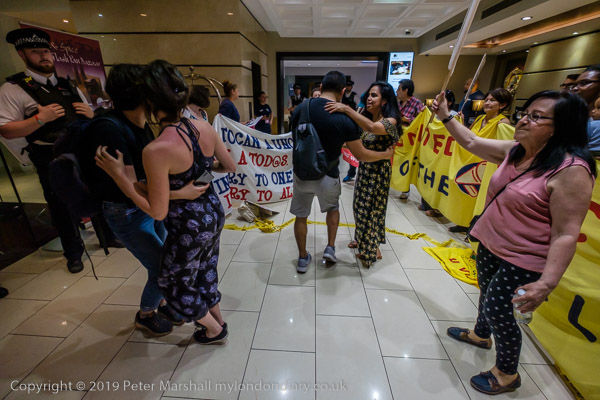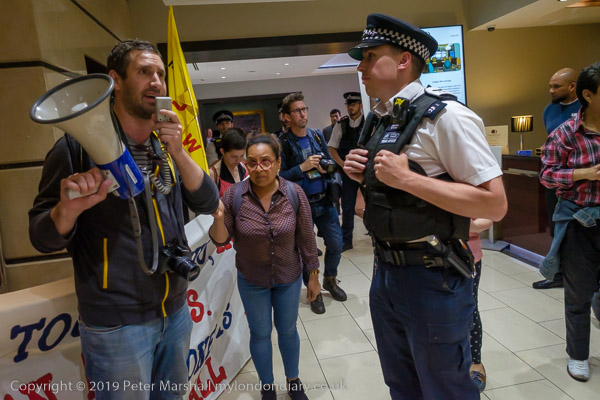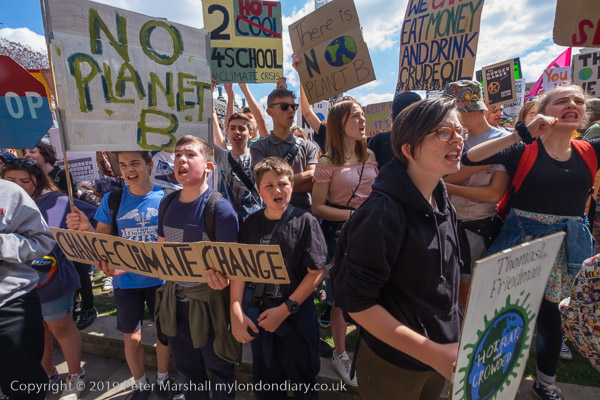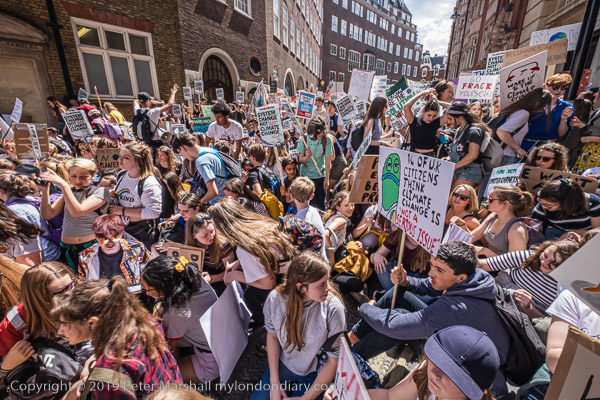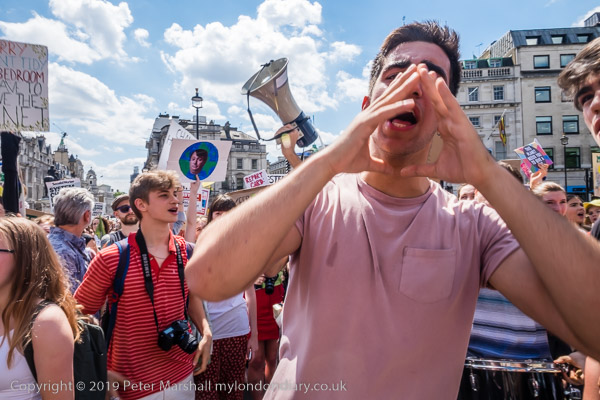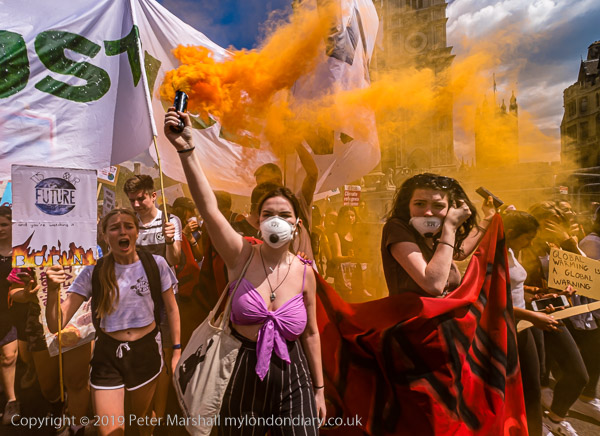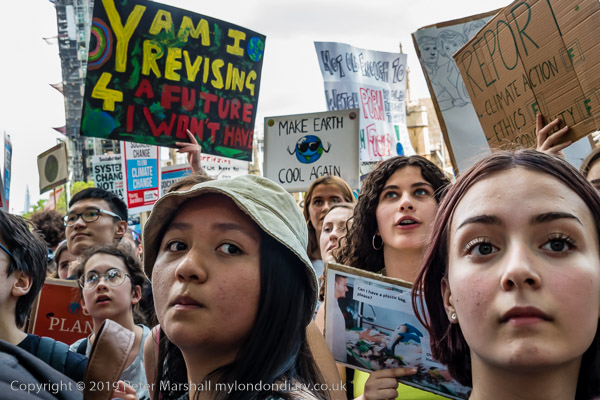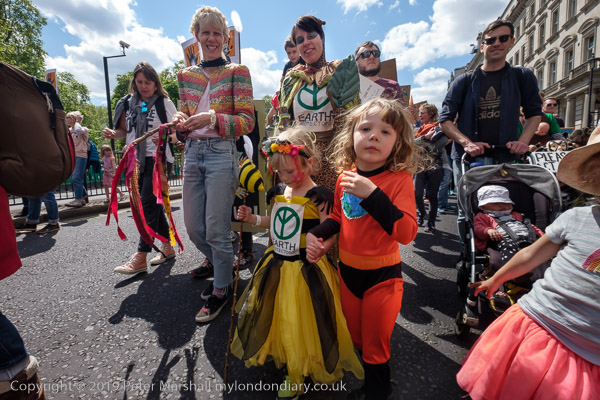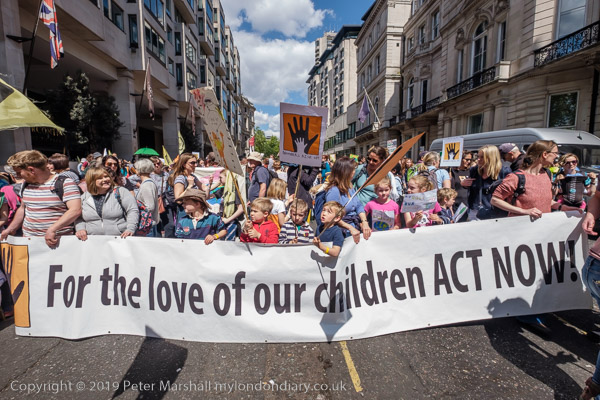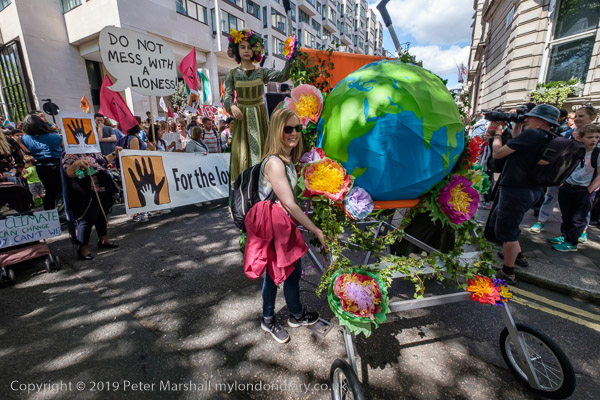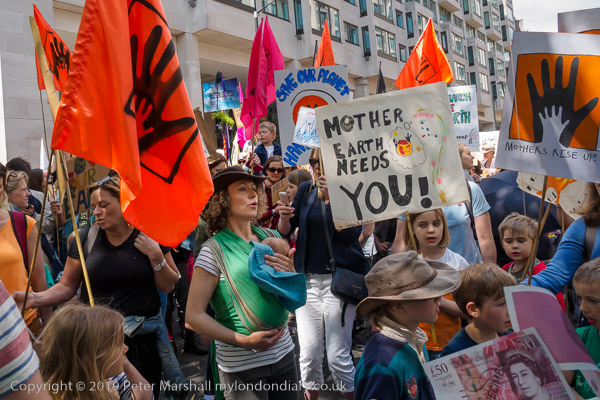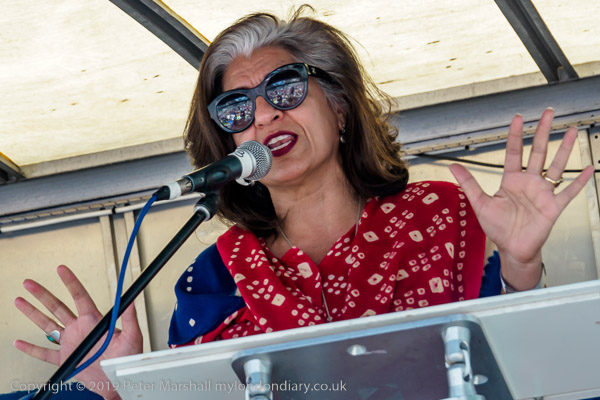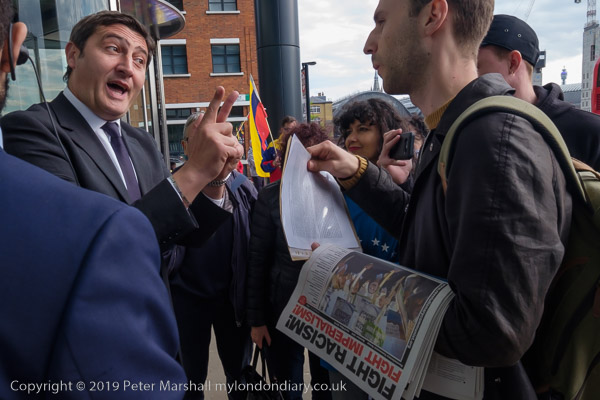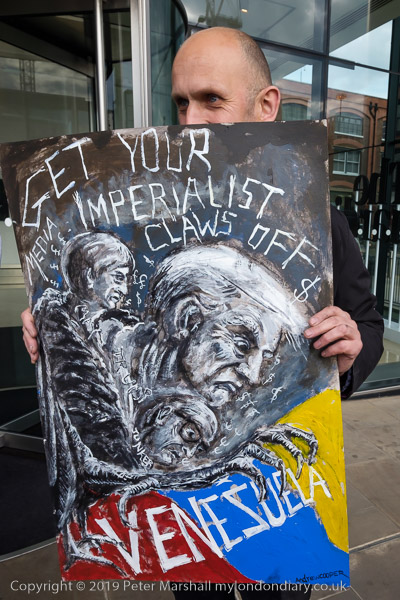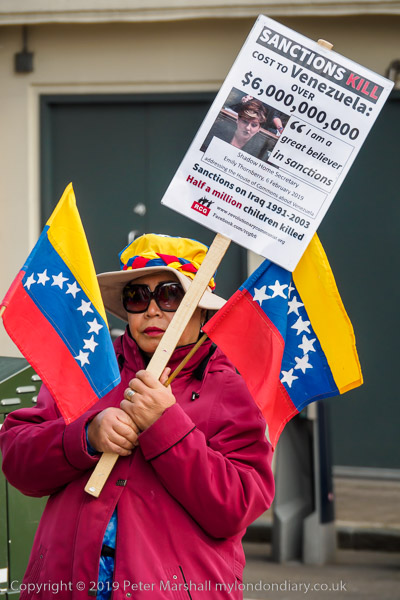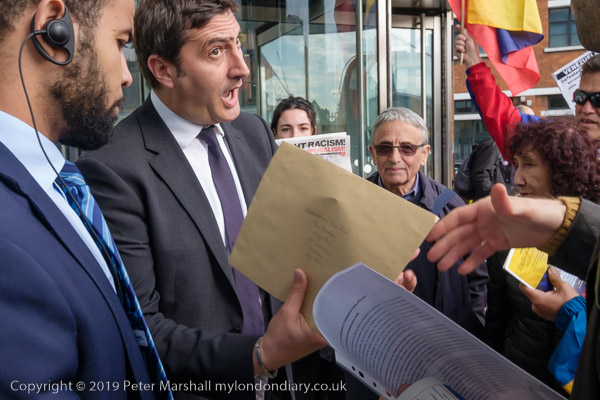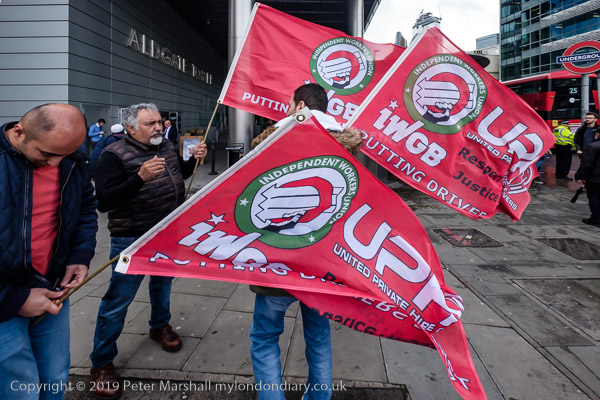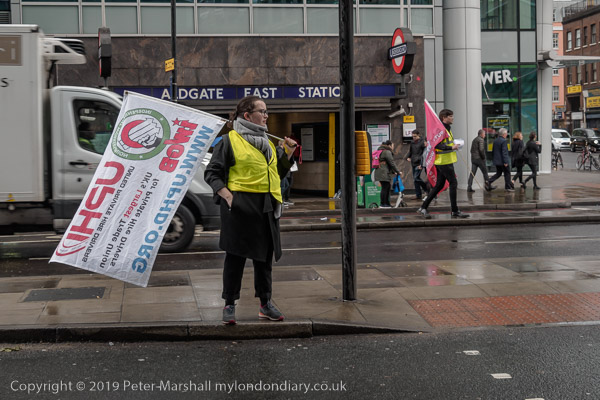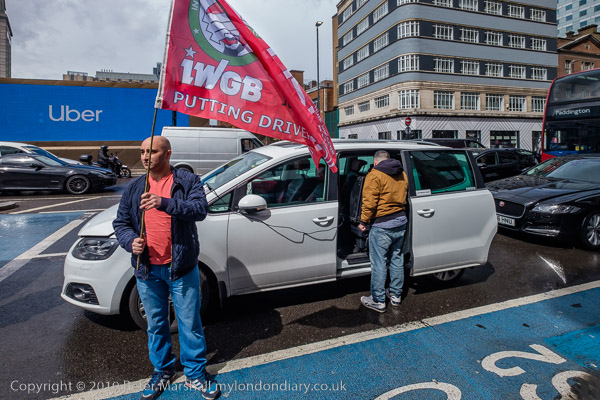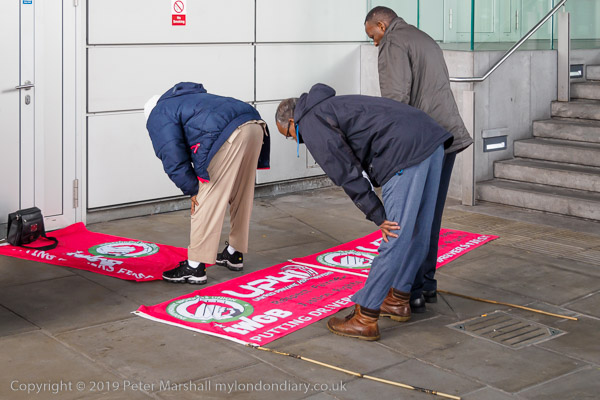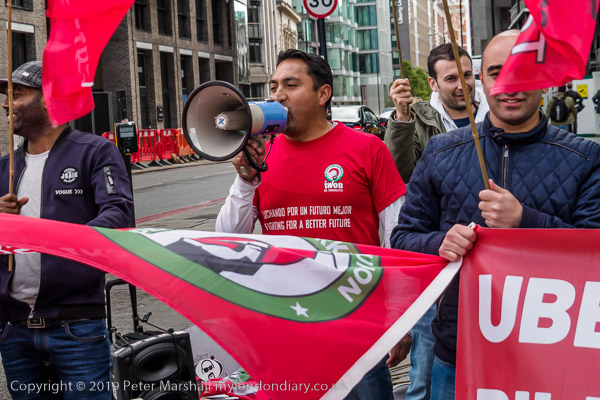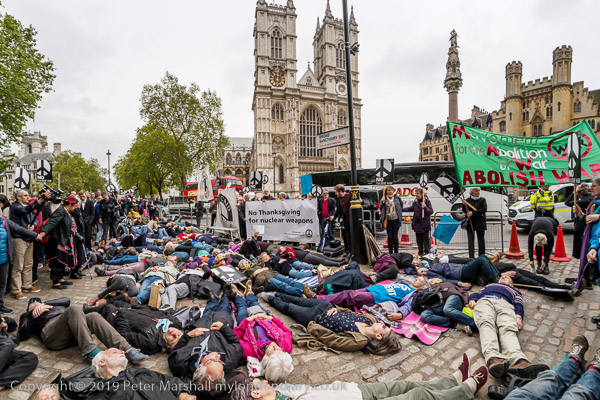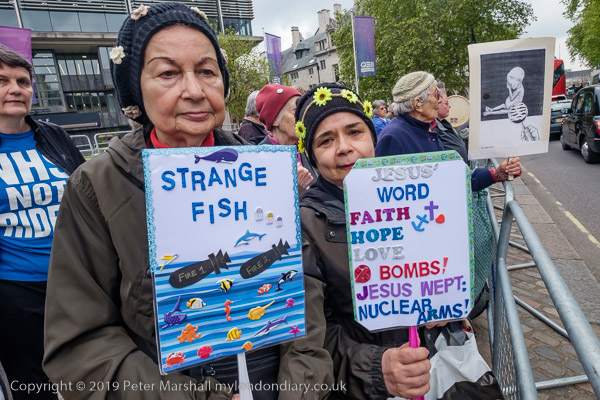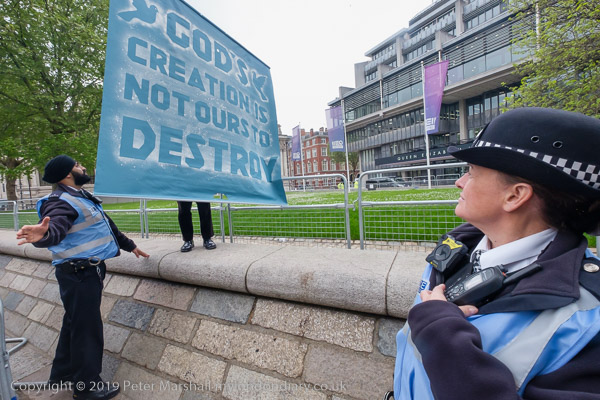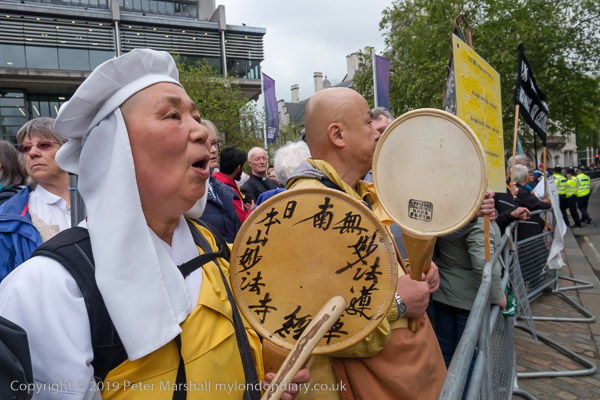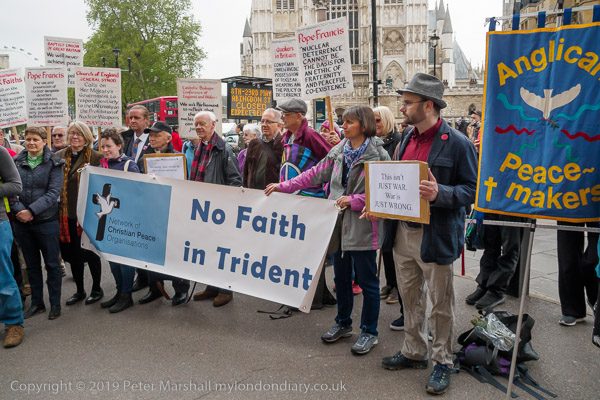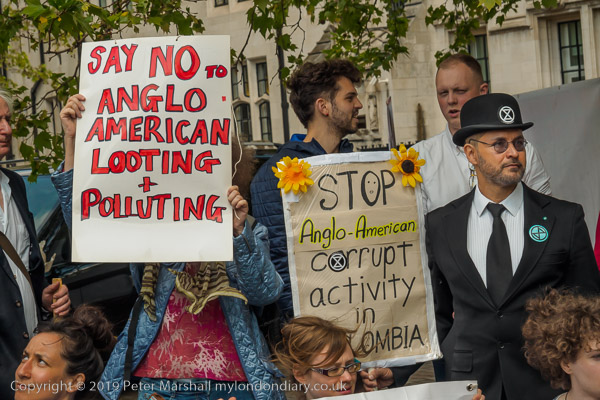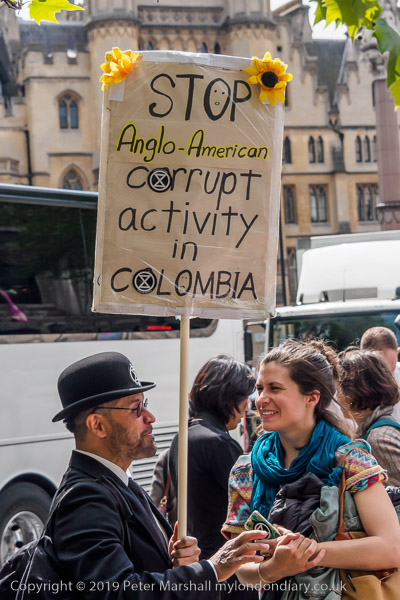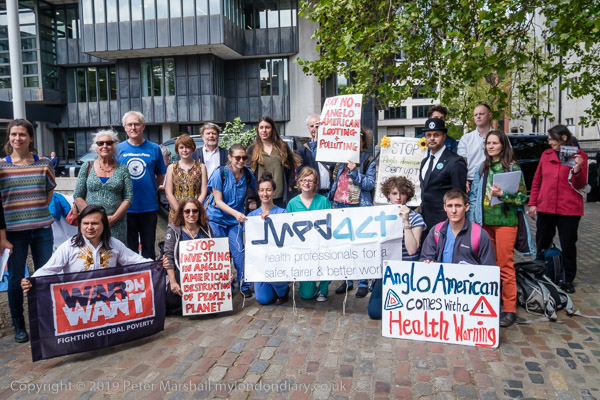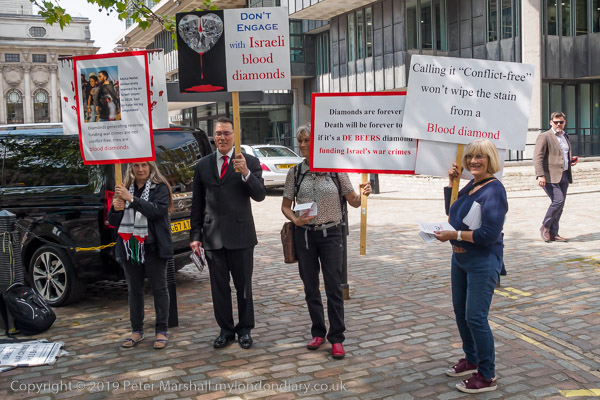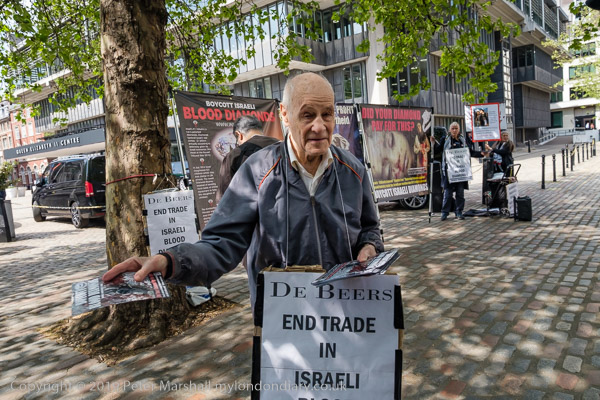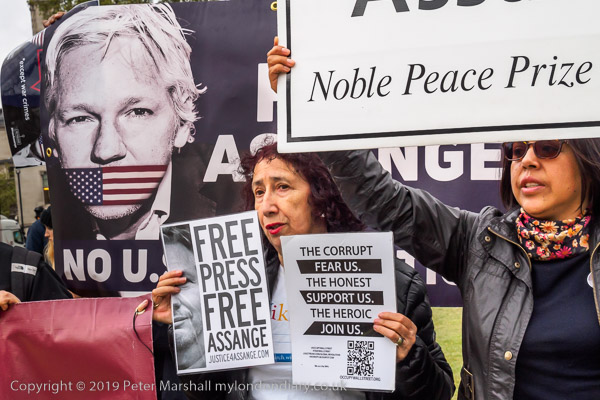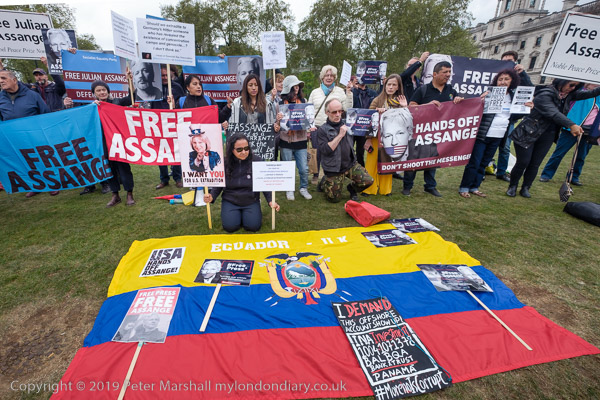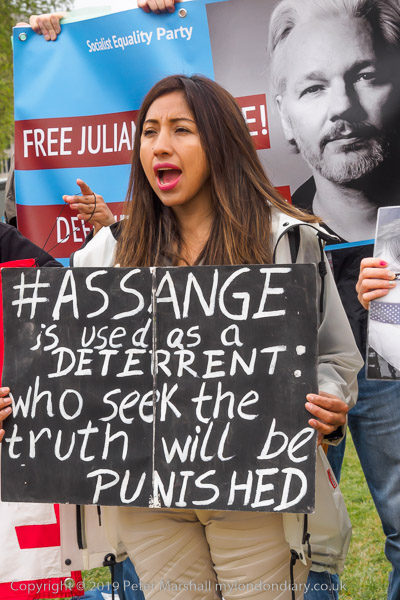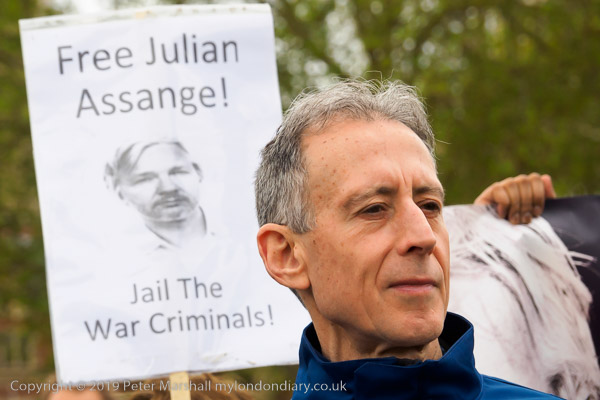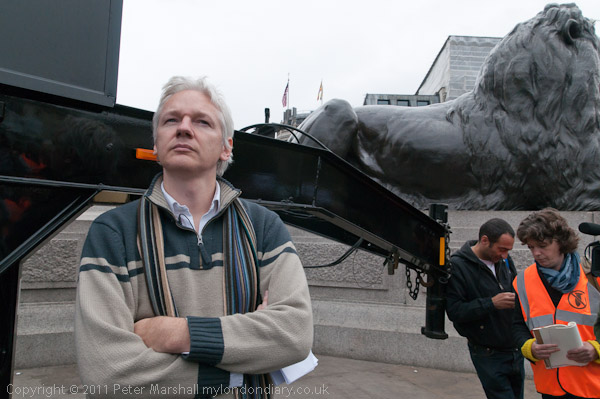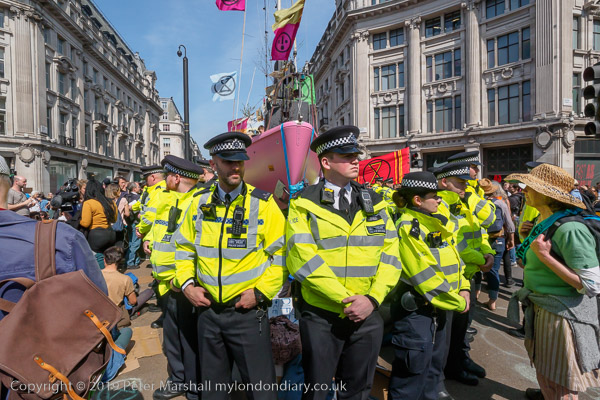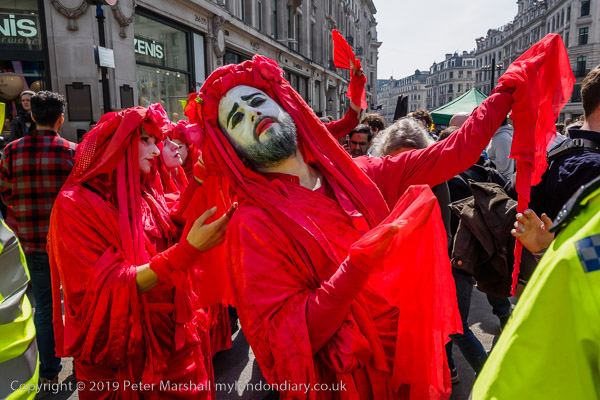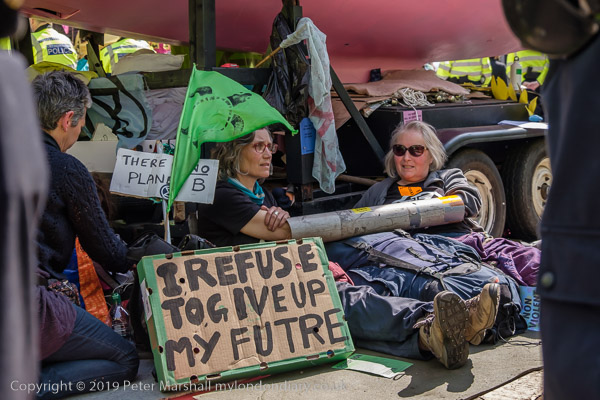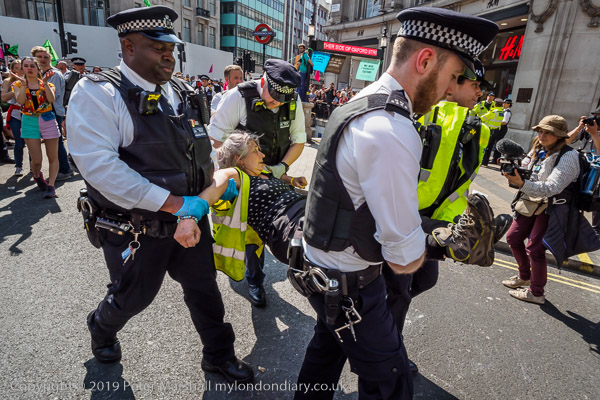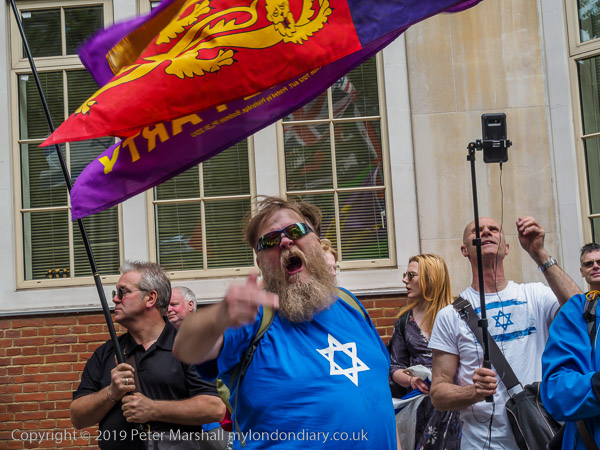
In yesterday’s post I ended by saying that I ended up feeling more welcome – and perhaps more comfortable – photographing the Zionists who had come to oppose the Al Quds Day march than the march itself.
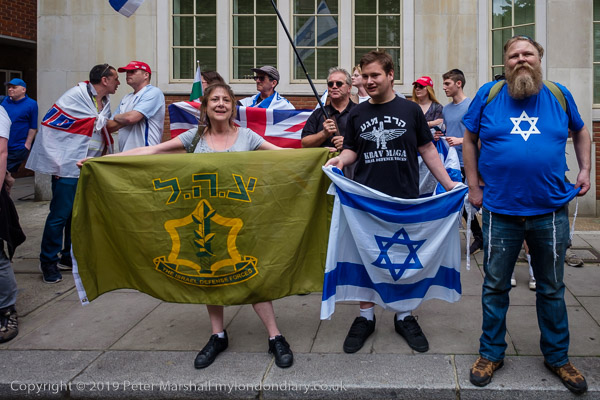
This definitely was not because I agreed with their views, and it was extremely unusual. At other events I’ve been shouted at, sworn at, threatened, subjected to rude gestures and have been condemned on-line as an “anti-semitic photographer”. Something completely untrue – as are most of the accusations made against Labour Party members – including many Jews – of anti-semitism.
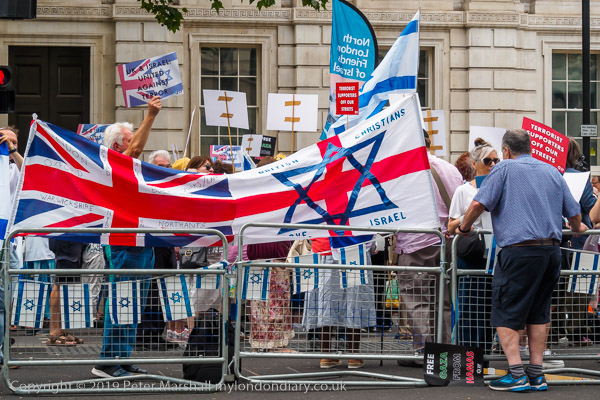
There are a small number – sometimes two and seldom in double figures – of people who occasionally turn up to try and disrupt protests calling for freedom and justice for Palestinians. Some were present on this occasion, but with a rather larger number of others, perhaps around 50 at a more official rally at Downing St and a few fewer who came to the meeting point of the Al Quds Day march outside the Home Office, and halted the march for a few minutes shortly after its start before police kept them moving slowly some distance in front of it.
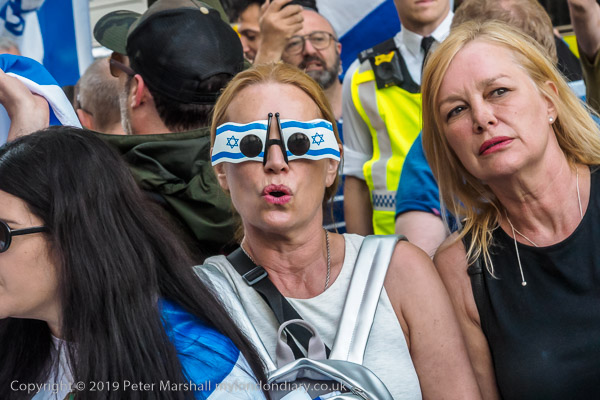
Among this more militant group were several well-known members of extreme right organisations including Tommy Robinson’s personal bodyguard Danny Thomas, while the official rally, as well as being organised by the Board of Deputies and the Zionist Federation was supported by the far-Right Sussex Friends of Israel and the Israel Advocacy Movement, both organisations with members who have demonstrated to the EDL.

But they were in a good mood after what had been for them something of a success, managing to briefly halt the march, and bringing out larger numbers than before. There were quite a few photographers taking pictures and they were keen to have their protest recorded. I wondered whether I should give them any publicity, but in the end filed a few pictures and published some on My London Diary.
There are no adverts on this site and it receives no sponsorship, and I like to keep it that way. But it does take a considerable amount of my time and thought, and if you enjoy reading it, please share on social media.
And small donations via Paypal – perhaps the cost of a beer – would be appreciated.
All photographs on this and my other sites, unless otherwise stated, are taken by and copyright of Peter Marshall, and are available for reproduction or can be bought as prints.
